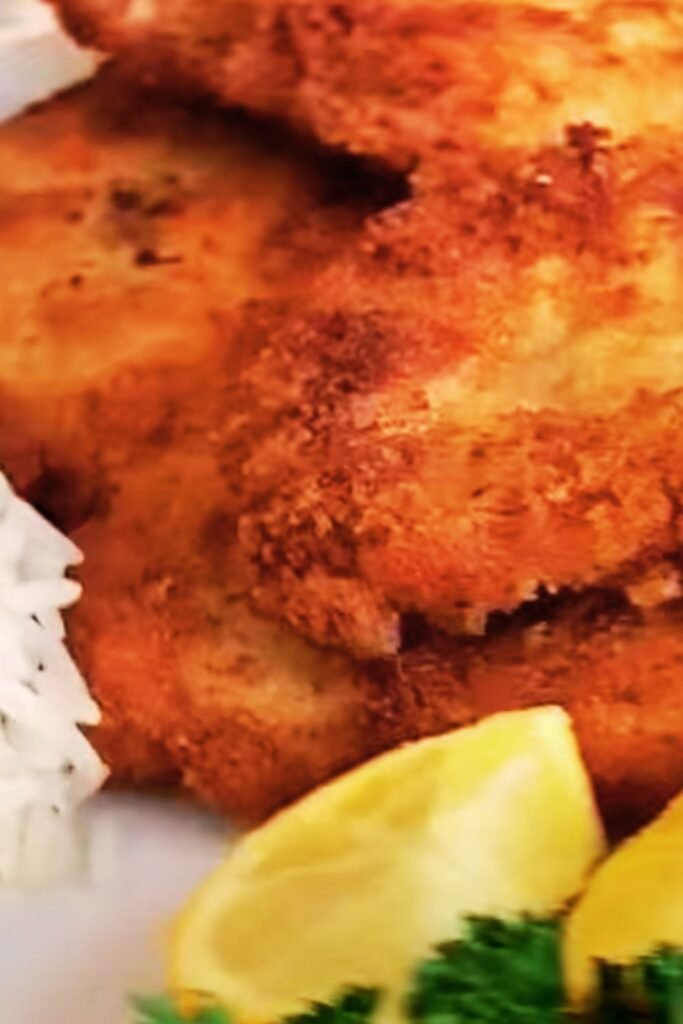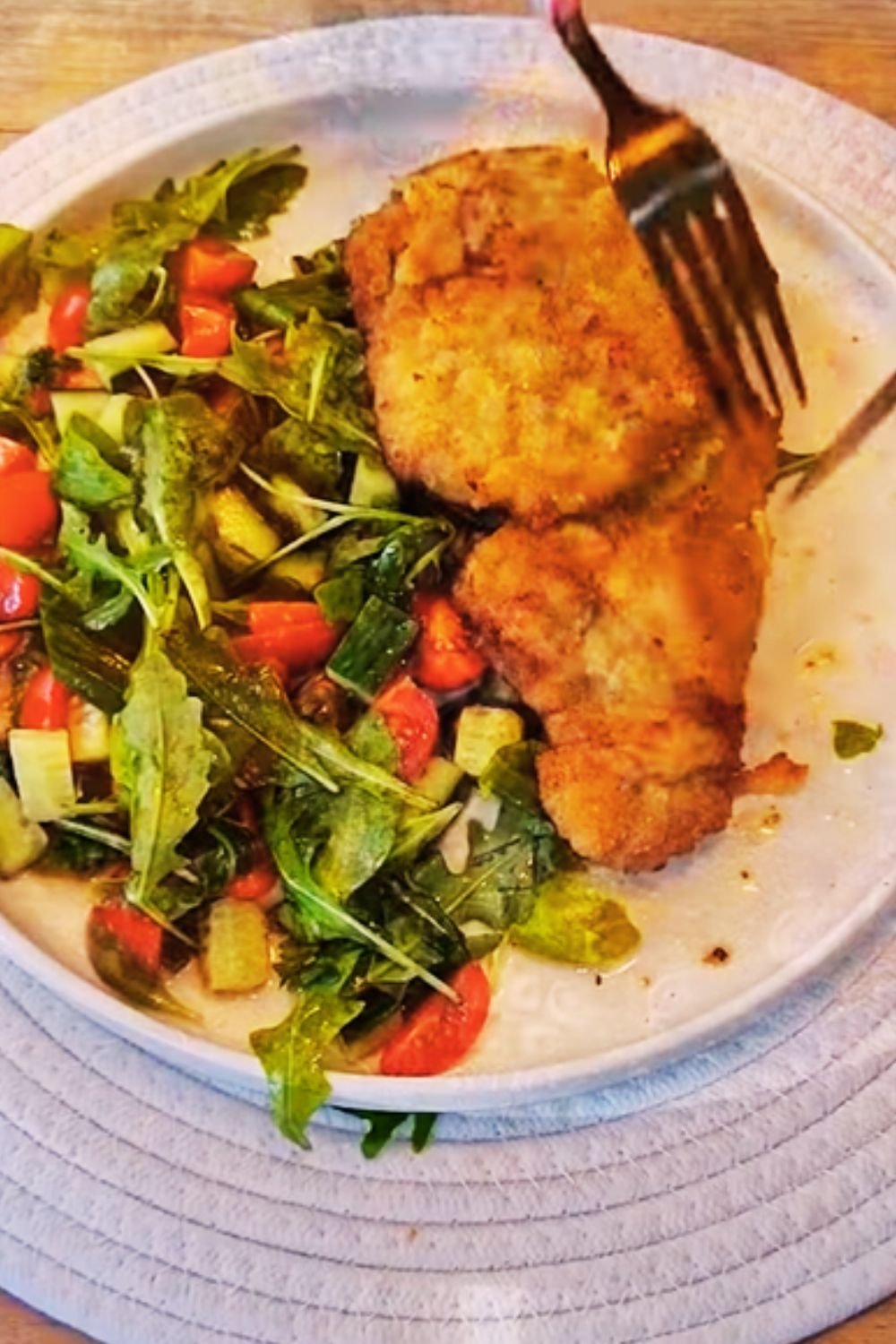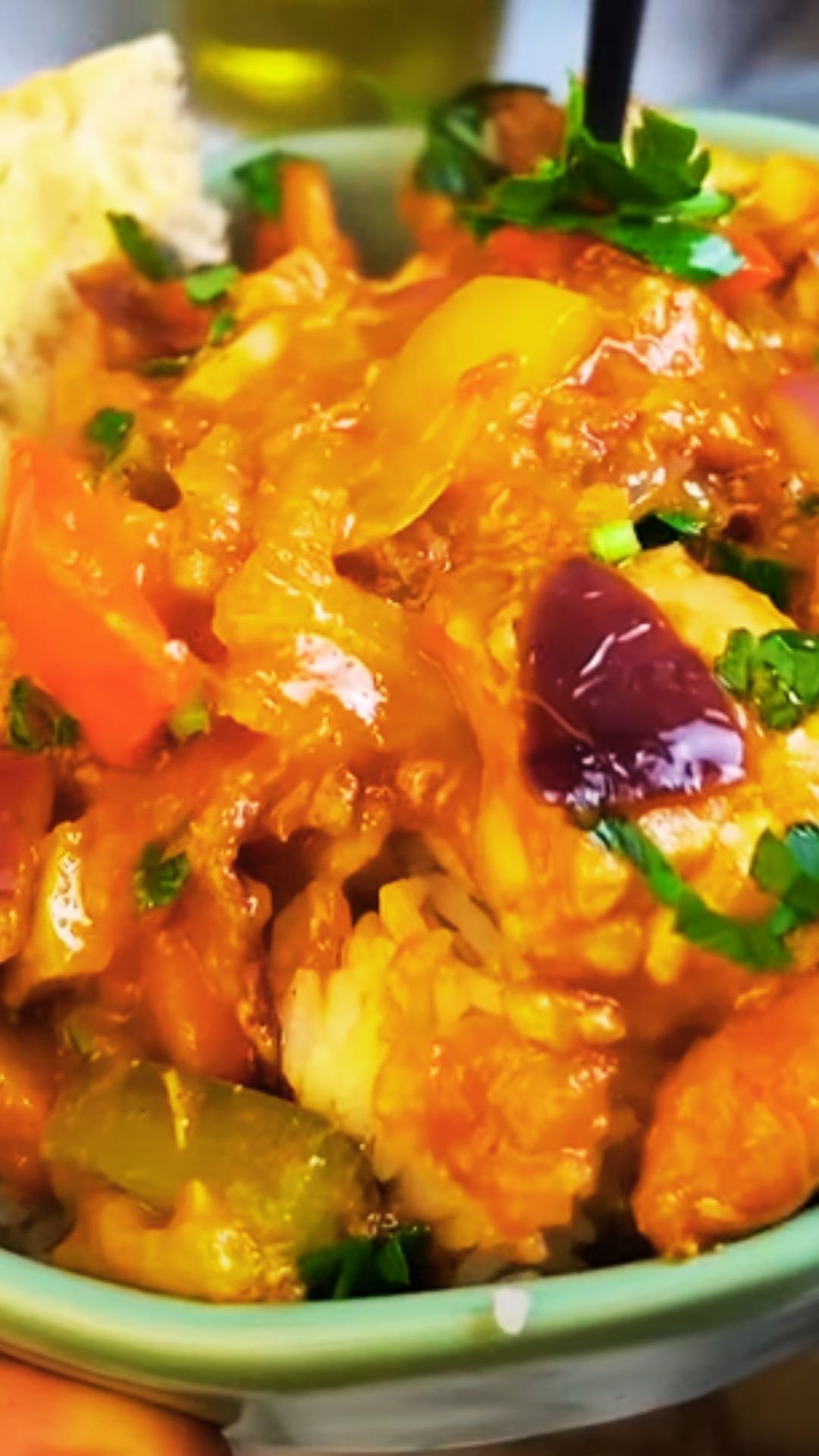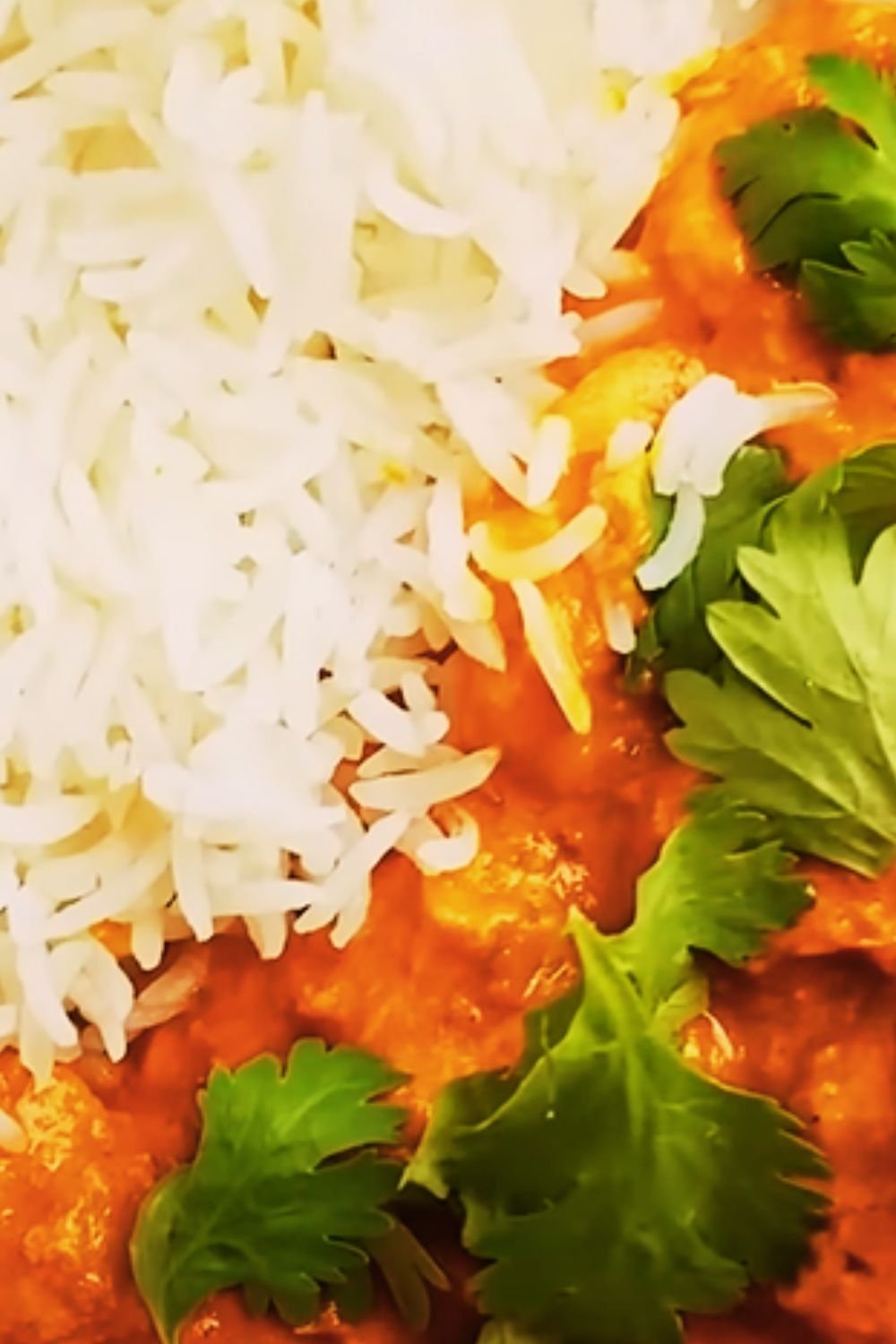There’s something magical about the satisfying crunch of a perfectly golden schnitzel that makes my heart skip a beat every time I hear that first bite. I’ve been perfecting my pork schnitzel recipe for years, and I’m thrilled to share this foolproof method that guarantees restaurant-quality results in your own kitchen.
Pork schnitzel isn’t just a meal—it’s a culinary experience that transforms a simple piece of meat into something extraordinary. Whether you’re cooking for a weeknight dinner or impressing guests at a dinner party, this recipe delivers consistent, delicious results that’ll have everyone asking for seconds.
What Makes This Pork Schnitzel Recipe Special
My approach to pork schnitzel focuses on achieving that perfect balance of crispy exterior and tender, juicy interior. I’ve discovered that the secret lies not just in the breading technique, but in the quality of ingredients and attention to detail during preparation.
Schnitzel: A thin, breaded cutlet of meat that’s pan-fried until golden brown and crispy
Pounding: The process of flattening meat to ensure even cooking and tenderness
Dredging: The three-step coating process using flour, egg, and breadcrumbs
Clarified Butter: Butter with milk solids removed, ideal for high-heat cooking without burning
The beauty of this recipe lies in its simplicity and reliability. I’ve tested countless variations, and this method consistently produces schnitzel with that coveted crispy coating that doesn’t fall off and meat that stays incredibly tender.
Essential Ingredients for Perfect Pork Schnitzel
Creating exceptional pork schnitzel starts with selecting the right ingredients. I’ve learned through experience that quality matters significantly in this dish, as each component plays a crucial role in the final result.
Primary Ingredients
| Ingredient | Quantity | Purpose | Selection Tips |
|---|---|---|---|
| Pork Loin Chops | 4 pieces (6-8 oz each) | Main protein | Choose boneless, ¼ inch thick |
| All-Purpose Flour | 1 cup | First coating layer | Sift for smoother texture |
| Large Eggs | 3 whole | Binding agent | Room temperature works best |
| Panko Breadcrumbs | 2 cups | Crispy exterior | Japanese style preferred |
| Vegetable Oil | 2 cups | Frying medium | Neutral flavor, high smoke point |
| Salt | 2 teaspoons | Seasoning | Kosher or sea salt |
| Black Pepper | 1 teaspoon | Flavor enhancement | Freshly ground |
| Paprika | 1 teaspoon | Color and mild flavor | Sweet Hungarian variety |
Optional Flavor Enhancers
| Ingredient | Quantity | Purpose | When to Add |
|---|---|---|---|
| Garlic Powder | ½ teaspoon | Aromatic depth | Mix with flour |
| Dried Herbs | 1 teaspoon | Mediterranean flavor | Combine with breadcrumbs |
| Lemon Zest | 1 lemon | Fresh brightness | Add to breadcrumbs |
| Parmesan Cheese | ¼ cup grated | Umami richness | Mix with breadcrumbs |
The key to my success with this recipe has been understanding that each ingredient serves a specific purpose. The flour creates the foundation for adherence, the eggs provide the binding moisture, and the panko breadcrumbs deliver that signature crunch.
Step-by-Step Preparation Method
My foolproof method for preparing pork schnitzel breaks down into manageable steps that ensure success every time. I’ve refined this process through years of cooking, and following these steps precisely will give you professional results.
Meat Preparation Phase
- Remove the pork chops from refrigeration 30 minutes before cooking to bring them to room temperature
- Trim any excess fat from the edges, leaving just a thin border for flavor
- Place each chop between plastic wrap or parchment paper sheets
- Pound gently with a meat mallet until each piece reaches ¼ inch thickness consistently
- Season both sides with salt and pepper, pressing gently to adhere
The pounding process is crucial—it breaks down muscle fibers, ensuring tender results and even cooking. I use gentle, overlapping strikes rather than aggressive pounding to avoid tearing the meat.
Breading Station Setup
Creating an efficient breading station makes the coating process smooth and mess-free:
- Arrange three shallow dishes in a row on your counter
- Fill the first dish with seasoned flour (add garlic powder and paprika here)
- Beat eggs thoroughly in the second dish with a splash of water
- Spread panko breadcrumbs in the third dish, seasoning if desired
- Keep one hand designated for dry ingredients, one for wet
The Perfect Breading Technique
This is where the magic happens, and proper technique makes all the difference:
- Dredge each pork chop in seasoned flour, shaking off excess
- Dip into beaten eggs, ensuring complete coverage
- Press firmly into breadcrumbs, coating both sides thoroughly
- Gently shake off loose crumbs and place on a clean plate
- Allow coated schnitzels to rest for 10 minutes before cooking
The resting period allows the coating to set properly, preventing it from sliding off during cooking.
Cooking Techniques for Golden Perfection
The cooking phase is where my years of experience really shine through. I’ve discovered that controlling temperature and timing are absolutely critical for achieving that perfect golden crust while keeping the meat juicy.
Pan Preparation and Oil Temperature
Getting the oil temperature right is non-negotiable for success:
- Choose a heavy-bottomed skillet or cast iron pan for even heat distribution
- Add oil to reach ½ inch depth in the pan
- Heat oil to 350°F (175°C) using a thermometer for accuracy
- Test with a breadcrumb – it should sizzle immediately when dropped in
- Maintain consistent temperature throughout cooking
The Cooking Process
| Step | Time | Temperature | Visual Cues |
|---|---|---|---|
| First Side | 3-4 minutes | 350°F | Golden brown, edges set |
| Flip Once | – | – | Use tongs, not fork |
| Second Side | 2-3 minutes | 350°F | Matching golden color |
| Rest Period | 2 minutes | – | On paper towels |
I never overcrowd the pan, cooking only 2 pieces at a time to maintain oil temperature. This patience pays off with consistently crispy results.
The internal temperature should reach 145°F (63°C) for food safety, but with properly pounded meat, timing is usually more reliable than temperature checking.

Serving Suggestions and Accompaniments
My favorite part of serving pork schnitzel is creating a complete meal experience that complements the crispy, savory main dish. I’ve discovered countless delicious combinations over the years.
Traditional German Accompaniments
Spaetzle: Small, irregular egg noodles that soak up flavors beautifully
Sauerkraut: Fermented cabbage that provides acidic contrast to rich schnitzel
German Potato Salad: Warm, vinegar-based potato salad with herbs
Red Cabbage: Sweet and sour braised cabbage that adds color and nutrition
Modern Side Dish Options
| Side Dish | Preparation Time | Flavor Profile | Why It Works |
|---|---|---|---|
| Roasted Vegetables | 25 minutes | Caramelized, sweet | Balances richness |
| Arugula Salad | 5 minutes | Peppery, fresh | Cuts through fat |
| Garlic Mashed Potatoes | 20 minutes | Creamy, savory | Comfort food pairing |
| Steamed Asparagus | 8 minutes | Clean, vegetal | Light contrast |
| Cucumber Salad | 10 minutes | Cool, refreshing | German tradition |
Sauce Recommendations
I prefer serving schnitzel with simple accompaniments that don’t overshadow the star:
- Fresh lemon wedges – Essential for that bright, acidic finish
- Lingonberry jam – Traditional sweet-tart condiment
- Mustard varieties – Dijon or whole grain work beautifully
- Herb butter – Made with parsley, chives, and garlic
- Simple pan gravy – Using the fond from cooking
Storage and Reheating Guidelines
Proper storage techniques ensure you can enjoy leftover schnitzel without sacrificing quality. I’ve perfected methods that maintain that crucial crispy texture.
Immediate Storage Protocol
| Storage Method | Duration | Temperature | Container Type |
|---|---|---|---|
| Refrigerator | 3-4 days | 40°F or below | Airtight container |
| Freezer | 2-3 months | 0°F or below | Freezer-safe bags |
| Room Temperature | 2 hours max | Below 70°F | Covered plate |
Reheating for Best Results
Oven Method (Recommended):
- Preheat oven to 350°F (175°C)
- Place schnitzel on wire rack over baking sheet
- Heat for 8-10 minutes until warmed through
- Check internal temperature reaches 165°F (74°C)
Skillet Method:
- Heat small amount of oil in skillet over medium heat
- Cook 2-3 minutes per side until heated and crispy
- Avoid overcooking to prevent drying out
I never recommend microwave reheating, as it makes the coating soggy and ruins the texture that makes schnitzel special.
Troubleshooting Common Issues
Through years of making schnitzel, I’ve encountered and solved virtually every problem that can arise. Here are the most common issues and my proven solutions.
Coating Problems and Solutions
| Problem | Cause | Prevention | Solution |
|---|---|---|---|
| Coating Falls Off | Wet meat, rushed process | Pat dry, rest coated meat | Re-bread if needed |
| Uneven Browning | Inconsistent oil temperature | Monitor heat closely | Adjust temperature |
| Soggy Coating | Oil too cool, overcrowding | Maintain 350°F, cook in batches | Increase heat |
| Burnt Exterior | Oil too hot | Use thermometer | Lower temperature |
| Dry Meat | Overcooked, too thick | Monitor timing, pound thinner | Reduce cooking time |
Texture and Flavor Fixes
Tough Meat: Usually results from insufficient pounding or overcooking. I always pound to exactly ¼ inch thickness and never exceed recommended cooking times.
Bland Flavor: Season generously at every step – the meat, flour, and breadcrumbs all benefit from proper seasoning.
Greasy Results: This happens when oil temperature is too low. The coating absorbs oil instead of creating a barrier. Always maintain proper temperature.
Nutritional Information and Variations
Understanding the nutritional profile helps you make informed decisions about incorporating this dish into your meal planning.
Nutritional Breakdown (Per Serving)
| Nutrient | Amount | % Daily Value | Health Notes |
|---|---|---|---|
| Calories | 485 | 24% | Moderate calorie density |
| Protein | 42g | 84% | Excellent protein source |
| Fat | 28g | 36% | From oil and natural meat fats |
| Carbohydrates | 18g | 6% | Primarily from breading |
| Fiber | 1g | 4% | Low fiber content |
| Sodium | 620mg | 27% | Monitor for sodium-sensitive diets |
Healthier Preparation Alternatives
Baked Version: Spray with cooking oil and bake at 425°F for 15-20 minutes, flipping once
Air Fryer Method: Cook at 380°F for 12-15 minutes, flipping halfway through
Whole Wheat Coating: Substitute whole wheat flour and breadcrumbs for added fiber
Lean Cuts: Use pork tenderloin for lower fat content
These alternatives reduce oil content while maintaining much of the traditional flavor and texture.
Questions and Answers
Q. Can I make pork schnitzel ahead of time? You can bread the schnitzels up to 4 hours ahead and refrigerate them. This actually improves coating adherence. However, I recommend cooking them fresh for the best texture and flavor.
Q. What’s the best cut of pork for schnitzel? I prefer boneless pork loin chops because they’re tender, have good marbling, and pound evenly. Pork tenderloin works well too, though it’s leaner. Avoid tough cuts like shoulder or leg.
Q. Why does my coating fall off during cooking? This usually happens when the meat is too wet or the coating hasn’t had time to set. Always pat the meat completely dry and let breaded schnitzels rest for 10 minutes before cooking.
Q. Can I use regular breadcrumbs instead of panko? Yes, but panko creates a lighter, crispier coating. If using regular breadcrumbs, you might need slightly less as they’re denser. The texture will be different but still delicious.
Q. How do I know when the oil is the right temperature? Use a thermometer for accuracy – 350°F is ideal. Without a thermometer, drop a pinch of breadcrumbs in the oil. They should sizzle immediately and float to the surface.
Q. What should I do if my schnitzel is browning too quickly? Reduce the heat immediately. The oil is too hot, which will burn the coating before the meat cooks through. Better to cook slower and achieve even browning.
Q. Can I freeze uncooked breaded schnitzel? Absolutely! Place them on a baking sheet to freeze individually, then transfer to freezer bags. They’ll keep for up to 3 months. Cook directly from frozen, adding 2-3 minutes to cooking time.
Q. Is it necessary to pound the meat so thin? Yes, pounding serves multiple purposes: it tenderizes the meat, ensures even cooking, and creates the proper texture that defines schnitzel. Thicker pieces won’t cook properly in the time it takes to brown the coating.
Q. What’s the difference between schnitzel and regular breaded pork chops? Traditional schnitzel is pounded very thin, uses a specific three-step breading process, and is pan-fried in shallow oil rather than deep-fried or baked. The technique creates a distinctly different texture and appearance.
Q. How can I tell when the schnitzel is done cooking? With properly pounded meat (¼ inch thick), timing is reliable – 3-4 minutes on the first side, 2-3 on the second. The coating should be golden brown and the internal temperature should reach 145°F if you want to check.
This super easy pork schnitzel recipe has become my go-to method for creating restaurant-quality results at home. The combination of proper technique, quality ingredients, and attention to detail ensures success every time. Whether you’re new to making schnitzel or looking to improve your technique, following these detailed steps will help you create a dish that’s crispy, tender, and absolutely delicious.
Remember, practice makes perfect, and each time you make this recipe, you’ll develop a better feel for the process. Don’t be afraid to adjust seasonings to your taste or experiment with different side dishes to create your perfect schnitzel meal experience.


